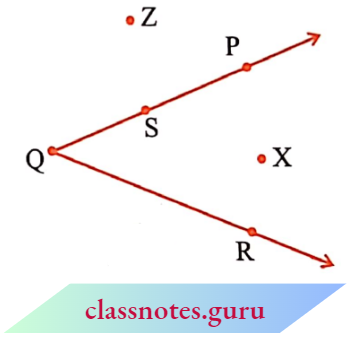NCERT Notes For Class 6 Maths Chapter 4 Basic Geometric Ideas
Basic Geometric Ideas Introduction
Geometry has a long and rich history. The term ‘Geometry’ is the English equivalent of the Greek word ‘Geometron’. ‘Geo’ means Earth and ‘metron’ means Measurement.
According to historians, geometrical ideas were shaped in ancient times, probably due to the need for art, architecture, and measurement.
These include occasions when the boundaries of cultivated lands had to be marked without giving room for complaints. Construction of magnificent palaces, temples, lakes, dams, and cities, art, and architecture propped up these ideas.

Even today geometrical ideas are reflected in all forms of art, measurements, architecture, engineering, cloth designing, etc. You observe and use different objects like boxes, tables, books, the tiffin box you carry to your school for lunch, the ball with which you play, and so on.
Read and Learn More NCERT Notes for Class 6 Maths
All such objects have different shapes. The ruler which you use, and the pencil with which you write are straight. The pictures of a bangle, the one rupee coin, or a ball appear round.
Here, you will learn some interesting facts that will help you know more about the shapes around you.

Points
With the sharp tip of the pencil, mark a dot on the paper. The sharper the tip, the thinner will be the dot. This almost invisible tiny dot will give you an idea of a point.
A point determines a location.
These are some models for a point:
If you mark three points on a paper, you will be required to distinguish them. For this, they are denoted by a single capital letter like A, B, C.
These points will be read as point A, point B, and point C.
Of course, the dots have to be invisibly thin.
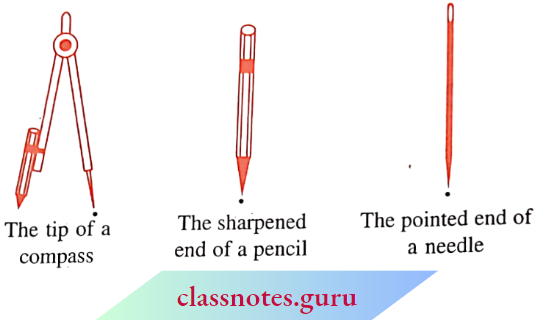
NCERT Notes For Class 6 Maths A Line Segment
Fold a piece of paper and unfold it. Do you see a fold? This gives the idea of a line segment. It has two end points A and B.
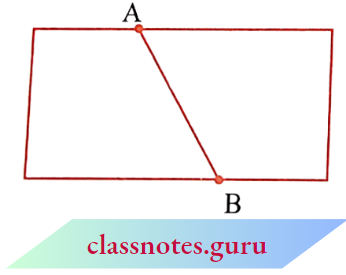
Take a thin thread. Hold its two ends and stretch it without a slack. It represents a line segment. The ends held by hands are the end B points of the line segment.
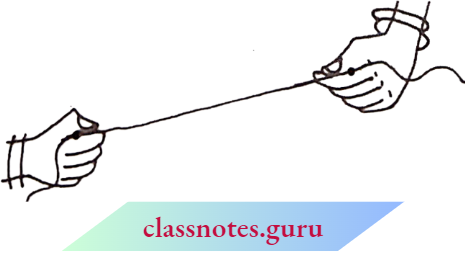
The following are some models for a line segment:
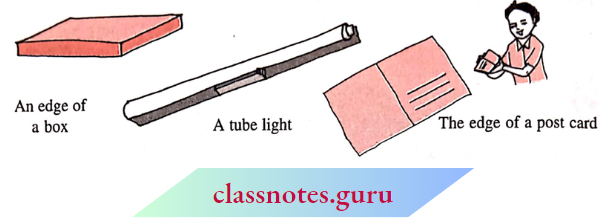
Try to find more examples of line segments from your surroundings.
Mark any two points A and B on a sheet of paper. Try to connect A to B by all possible routes.

What is the shortest route from A to B?
This shortest join of points A to B (including A and B) shown here is a line segment. It is denoted by \(\overrightarrow{A B}\) or \(\overrightarrow{B A}\) . Points A and B are called the endpoints of the segment.
A Line
Imagine that the line segment from A to B (i.e. \(\overrightarrow{A B}\) ) is extended beyond A in one direction and beyond B in the other direction without any end (see figure). You now get a model for a line.

Do you think you can draw a complete picture of a line? No. (Why?)
A line through two points A and B is written as \(\overrightarrow{A B}\)• It extends indefinitely in both directions. So it contains a countless number of points. (Think about this).
Two points are enough to fix a line. We say ‘Two points determine a line’.
The adjacent diagram is that of a line PQ written as \(\overrightarrow{P Q}\). Sometimes a line is denoted by a letter like l, m.
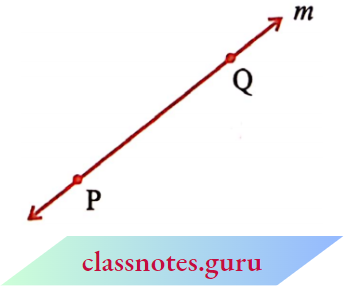
Intersecting Lines
Look at the diagram. Two lines l1 and l2 are shown. Both the lines pass through point P.
We say l1 and l2 intersect at P. If two lines have one common point, they are called intersecting lines.

The following are some models of a pair of intersecting lines:
Try to find some more models for a pair of intersecting lines.

NCERT Notes For Class 6 Maths Parallel Lines
Let us look at this table. The top ABCD is flat. Are you able to see some points and line segments?

Are there intersecting line segments?
Yes, AS and BQ intersect at the point B.
Which fine segments intersect at A? at C? or at D?
Do the lines AD and CD intersect?
Do the lines \(\overrightarrow{A D}\) and \(\overrightarrow{B C}\) intersect?
You find that on the table’s surface, there are line segments that will not meet, however far they are extended. \(\overrightarrow{A D}\) and \(\overrightarrow{B C}\) form one such pair. Can you identify one more such pair of lines (which do not meet) on the top of the table?
Lines like these that do not meet are said to be parallel and are called parallel lines.
Ray
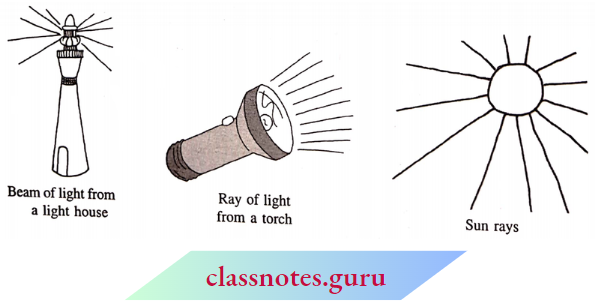
The following are some models of a ray:
A ray is a portion of a line. It starts at one point (called the starting point or initial point) and goes endlessly in a direction.
Look at the diagram of the ray shown here. Two points are shown on the ray.
They are
- A, the starting point
- P, a point on the path of the ray.
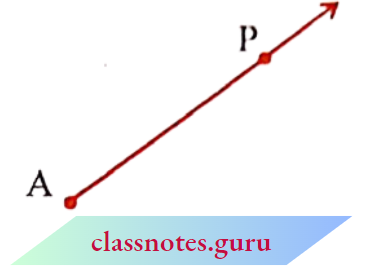
We denote it by \(\overrightarrow{\mathrm{AP}}\)
Curves
You can draw some of these drawings without lifting the pencil from the paper and without die use of a ruler. These are all curves.
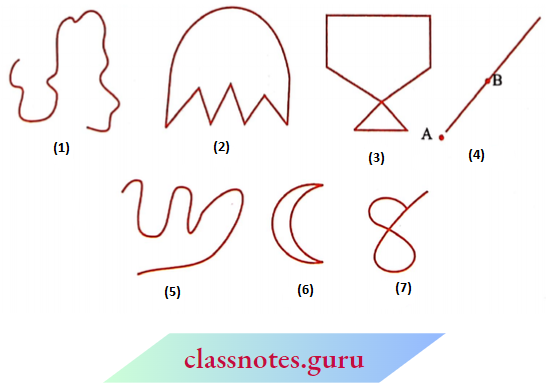
‘Curve’ in everyday usage means “not straight’’. In Mathematics, a curve can be straight like the one shown.
Observe that curves (3) and (4) in Figure cross themselves, whereas curves (1), (2), (5), and (6) do not. If a curve does not cross itself, then it is called a simple curve.
Draw five more simple curves and five curves that are not simple.
Consider these now.
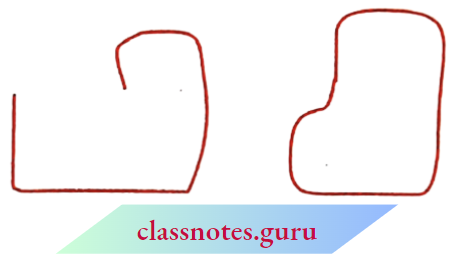
What is the difference between these two? The first i.e. (1) is an open curve and the second i.e. (2) is a closed curve. Can you identify some closed and open curves from the above? Draw five curves each that are open and closed.
Position in a figure
A court line in a tennis court is divided into three parts: inside the line, on the line, and outside the line. You cannot enter inside without crossing the line.
A compound wall separates your house from the road. You talk about ‘inside’ the compound, ‘on’ the boundary of the compound, and ‘outside’ the compound.
In a closed curve, thus, there are three parts.
- Interior (‘inside’) of the curve
- Boundary (‘on’) of the curve and
- Exterior (‘outside’) of the curve.
The below is in the interior, C is in the exterior and B is on the curve.
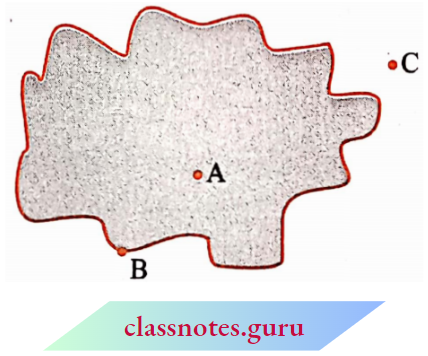
The interior of a curve together with its boundary is called its “region”.
NCERT Notes For Class 6 Maths Polygons
Look at these below (1), (2), (3), (4), (5) and (6).

What can you say? Are they closed? How does each one of them differ from die other? (1), (2), (3), (4), and (5) are special because they are made up entirely of line segments.
Out of these (1), (2), (3), and (4) are also simple closed curves. They are called polygons.
So, a figure is a polygon if it is a simple closed figure made up entirely of line segments. Draw ten differently shaped polygons.
Sides, vertices, and diagonals
Examine the figure given here. Give justification to call it a polygon.
The line segments forming a polygon are called its sides.
What are the sides of polygon ABCDE? (Note how the comers are named in order.)
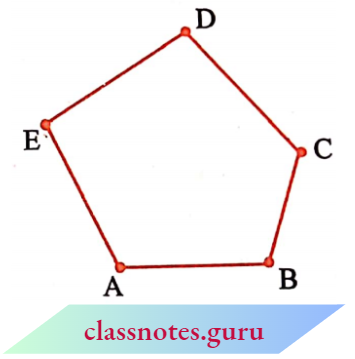
Sides are \(\overline{\mathrm{AB}}\), \(\overline{\mathrm{BC}}\), \(\overline{\mathrm{CD}}\), \(\overline{\mathrm{DE}} \text { and } \overline{\mathrm{EA}}\).
The meeting point of a pair of sides is called its vertex.
Sides \(\overline{\mathrm{AB}}\) and \(\overline{\mathrm{ED}}\) meet at E, so E is a vertex of the polygon ABCDE. Points B and C are its other vertices. Can you name the sides that meet at these points? Can you name the other vertices of the above polygon ABCDE?
Any two sides with a common endpoint are called the adjacent sides of the polygon.
Are the sides \(\overline{\mathrm{AB}}\) and \(\overline{\mathrm{BC}}\) adjacent? How about \(\overline{\mathrm{AE}}\) and \(\overline{\mathrm{DC}}\)? The endpoints of the same side of a polygon are called the adjacent vertices.
Vertices E and D are adjacent, whereas vertices A and D are not adjacent vertices. Do you see why?
Consider the pairs of vertices which are not adjacent. The joins of these vertices are called the diagonals of the polygon.
In the given \(\overline{\mathrm{AC}}, \overline{\mathrm{AD}}, \overline{\mathrm{BD}}, \overline{\mathrm{BE}} \text { and } \overline{\mathrm{CE}}\) are diagonals. Is \(\overline{\mathrm{BC}}\) a diagonal, Why or why not?
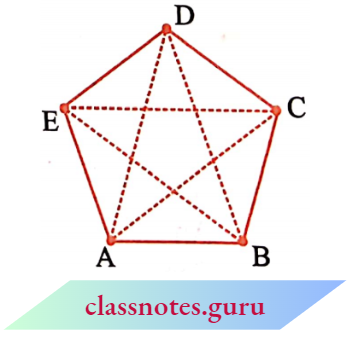
If you try to join adjacent vertices, will the result be a diagonal?
Name all the aides, adjacent aides, and adjacent vertices of the figure ABCDE.
Draw q polygon ABCDEFGH and name all the aides, adjacent sides, and vertices as well as the diagonals of the polygon.
Angles
Angles are made when comers are formed.
Here is a picture where the top of a box is like a hinged lid. The edges AD of the box and AP of the door can be imagined as two rays \(\overrightarrow{\mathrm{AD}}\) and \(\overrightarrow{\mathrm{AD}}\).
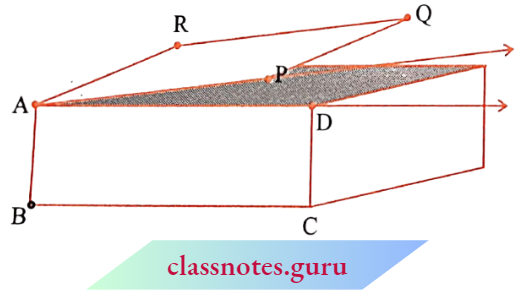
These two rays have a common initial point A. The two rays here together are said to form an angle.
An angle is made up of two rays starting from a common initial point. The two rays forming the angle are called the arms or sides of the angle. The common initial point is the vertex of the angle.
This is an angle formed by rays \(\overrightarrow{\mathrm{OP}} \text { and } \overline{\mathrm{OQ}}\). To show this we use a small curve at the vertex. 0 is the vertex. What are the sides? Are they not \(\overrightarrow{\mathrm{OP}} \text { and } \overline{\mathrm{OQ}}\)?

How can we name this angle? We can simply say that is an angle at O. To be more specific we identify two points, one on each side and the vertex to; tame the angle. Angle POQ is thus a better way of naming the angle. We denote this by ∠POQ.
Take any angle, say ∠ABC.

Shade that portion of the paper bordering \(\overrightarrow{\mathrm{BA}}\) and where \(\overrightarrow{\mathrm{BC}}\) lies.

Now shade in a different color the portion of the paper bordering \(\overrightarrow{\mathrm{BC}}\) and where \(\overrightarrow{\mathrm{AB}}\) lies.
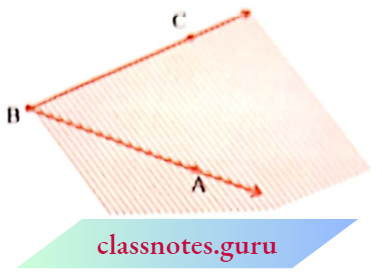
The portion common to both shadings is called the interior of ABC. (Note that the interior is not a restricted area; it extends indefinitely since the two sides extend indefinitely).
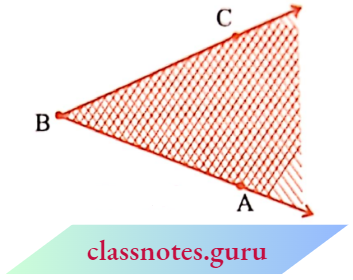
In this diagram, X is in the interior of the angle, Z is not in the interior but in the exterior of the angle, and S is on the ∠PQR. Thus, the angle also has three parts associated with it.
